Lake Titicaca is the world’s highest navigable lake, with a surface elevation of over 3,800 m (4155 yards). It’s peaceful beauty and ancient cultural traditions make visiting the lake a highlight of any South American itinerary.
*This post may contain affiliate links, as a result, we may receive a small commission (at no extra cost to you) on any bookings/purchases you make through the links in this post. As an Amazon Associate, we earn from qualifying purchases. Read our full disclosure
Traveling Soon? Here is a list of our favourite travel providers and accessories to help get you ready for your upcoming trip!
We spent a week exploring the area around Lake Titicaca, Bolivia on our recent trip to South America and got a chance to visit 4 out of the 6 islands. We started in La Paz, and with the help of Peru Hop, we made our way to Copacabana, the gateway to Isla del Sol, and then continued onwards to Puno, the getaway to Uros, Amanti and Taquile islands in Peru.
La Isla del Sol, Bolivia
Our first stop on Lake Titicaca was Isla del Sol, one of the largest islands on Lake Titicaca, Bolivia. Located on the Bolivian side, about 2 hours away from the town of Copacabana. The island plays an important role in the Inca religion with many legends and stories identifying Isla del Sol as the birthplace of the sun, or the Sun God.
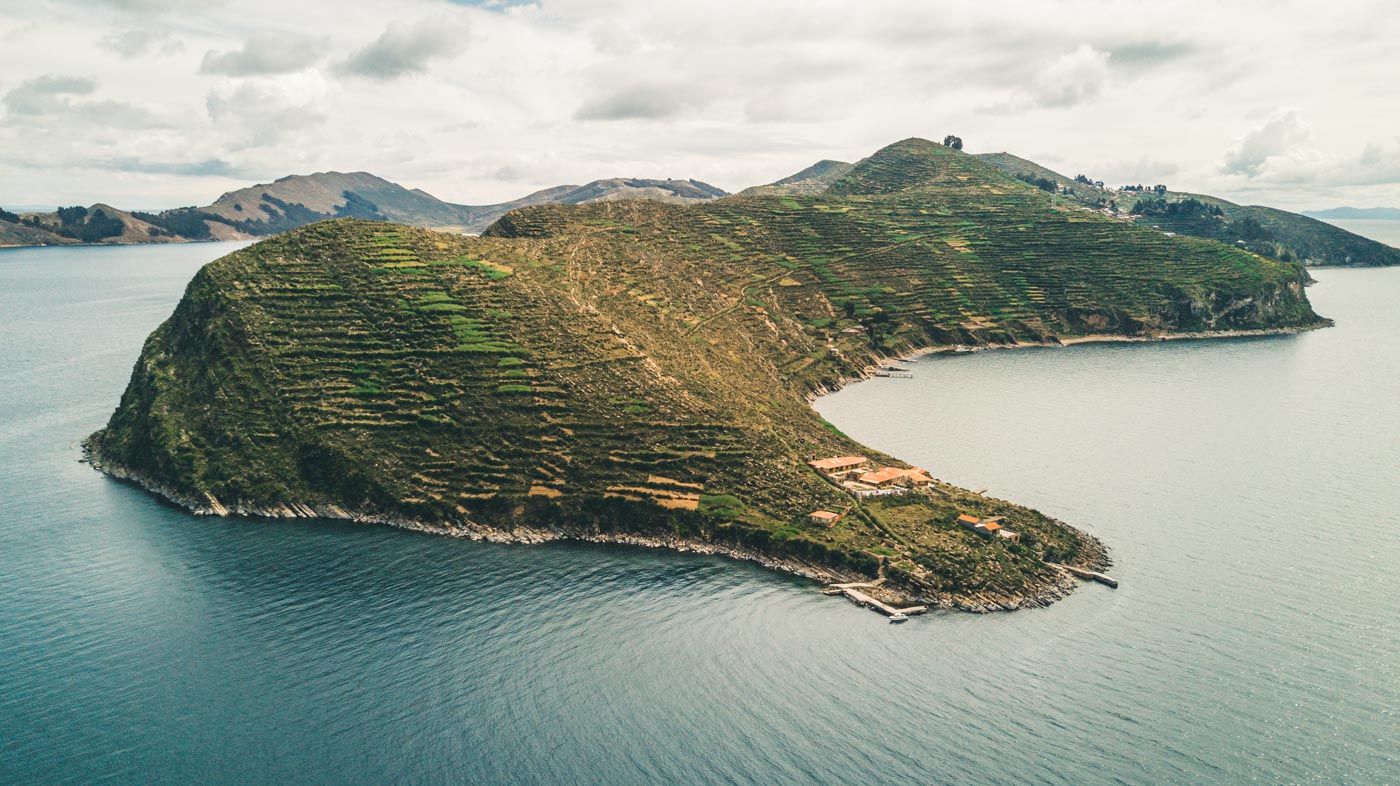
Isla del Sol has no motor vehicles or paved roads and it is home to only about 800 families. The island is divided into 3 different communities: Yumani in the South, Challampa in the North, and Challa in the middle. Yumani is the biggest with lots of accommodation options, restaurants, and even a few shops.
We stayed in Yumani for 1 night, which gave us plenty of time to hike to the southern tip of the island, check out the Temple of Pilcocaina, admire the beautiful views of the agricultural terraces, and go on a short hike up to the Mirador, the highest point on the island.

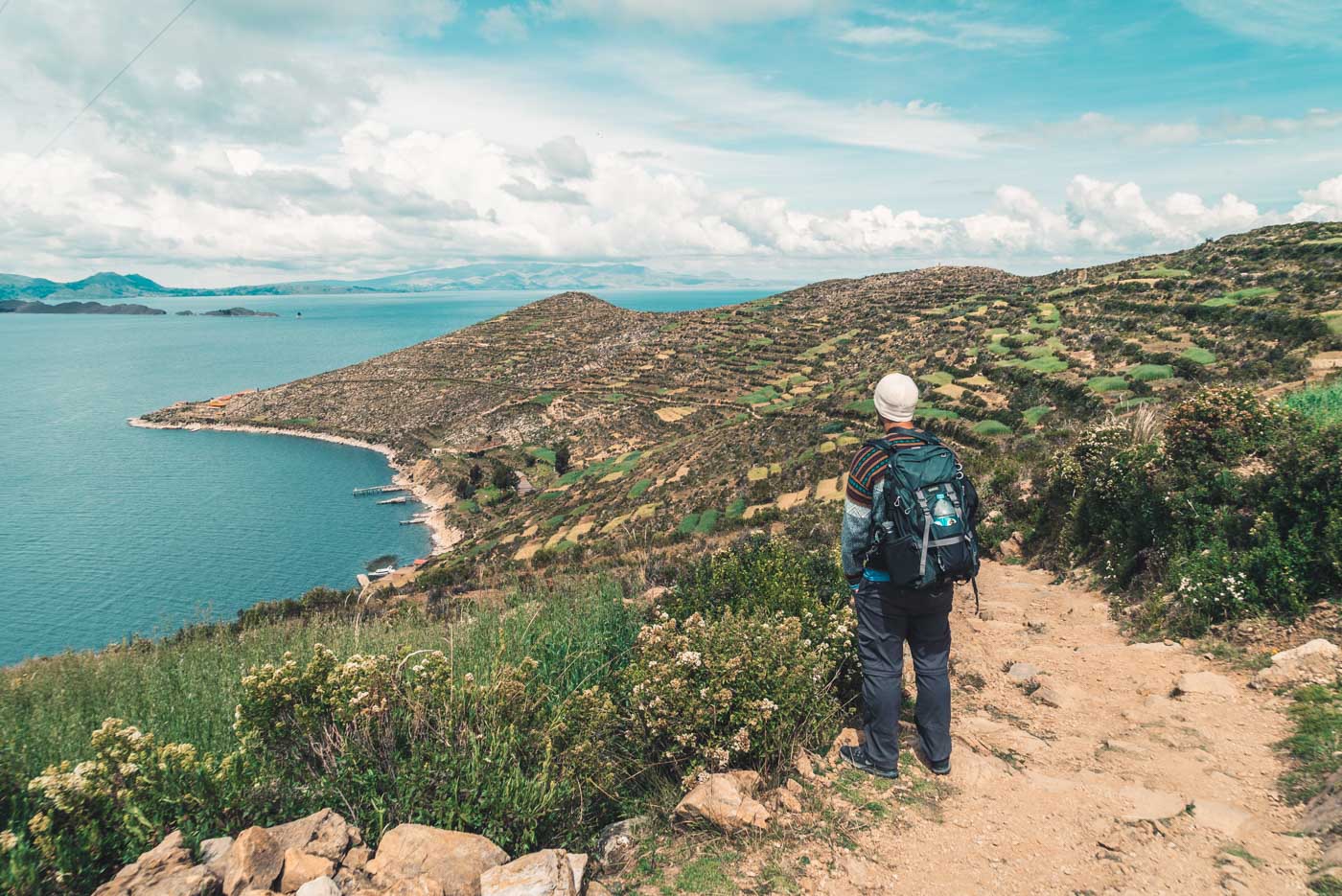
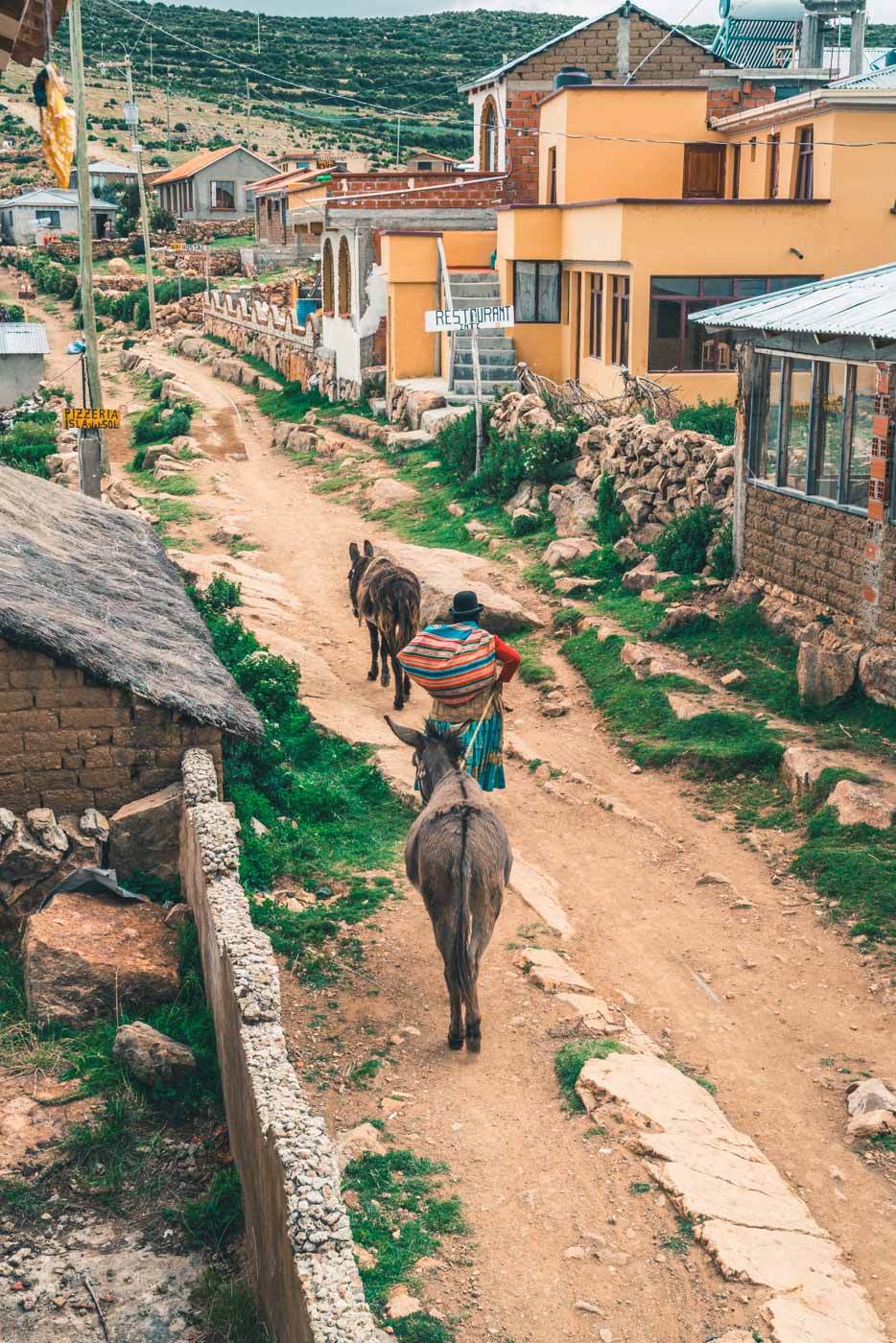

Unfortunately, during our visit in May 2017, the communities on the island were in a feud and no travelers were allowed to cross from the South side of the island to the North. But we heard that the 8-9km (5-5.5 miles)hike from one side of the island to the other was one of the Lake Titicaca tours really worth taking.
Once on the North side, you can also visit the Gold Museum (Museo de Oro), that houses Inca treasures discovered underwater off the island, and check out some of the ancient Inca sacred sites, like the Rock of the Puma, Inca Table, and Footsteps of the Sun.
After visiting Isla del Sol Bolivia, we returned to Copacabana and made our way across the border and into Peru, where we hopped on a 2-day Lake Titicaca tour of the Isla de Los Uros floating islands organized by Find Local Trips.
Looking to book a Lake Titicaca Tour? These are some options we recommend.
First stop was the unique floating islands of Uros, a chain of about 70-80 islands built from totora reeds. Each island appeared to be no more than 30-40m wide and was said to house one family of about 10-15 people.
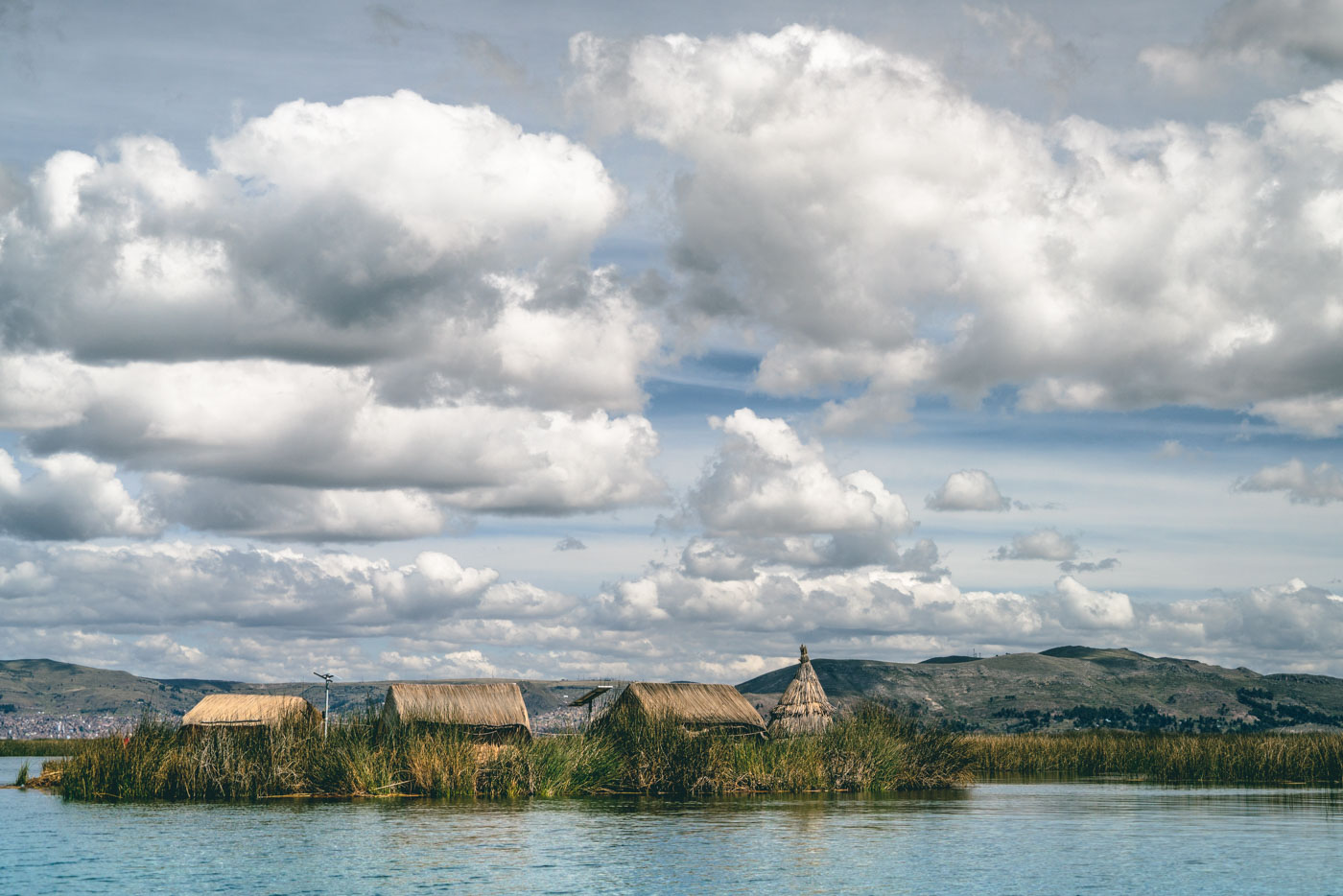
To be honest, we found this part of the tour to be incredibly touristy and unauthentic. Once on the island, we were greeted by women, men, and children dressed in colourful traditional clothing. They performed a little welcome song and posed for photos, while our guide gave us a short explanation of the way of life on the Lake Titicaca Floating Islands.


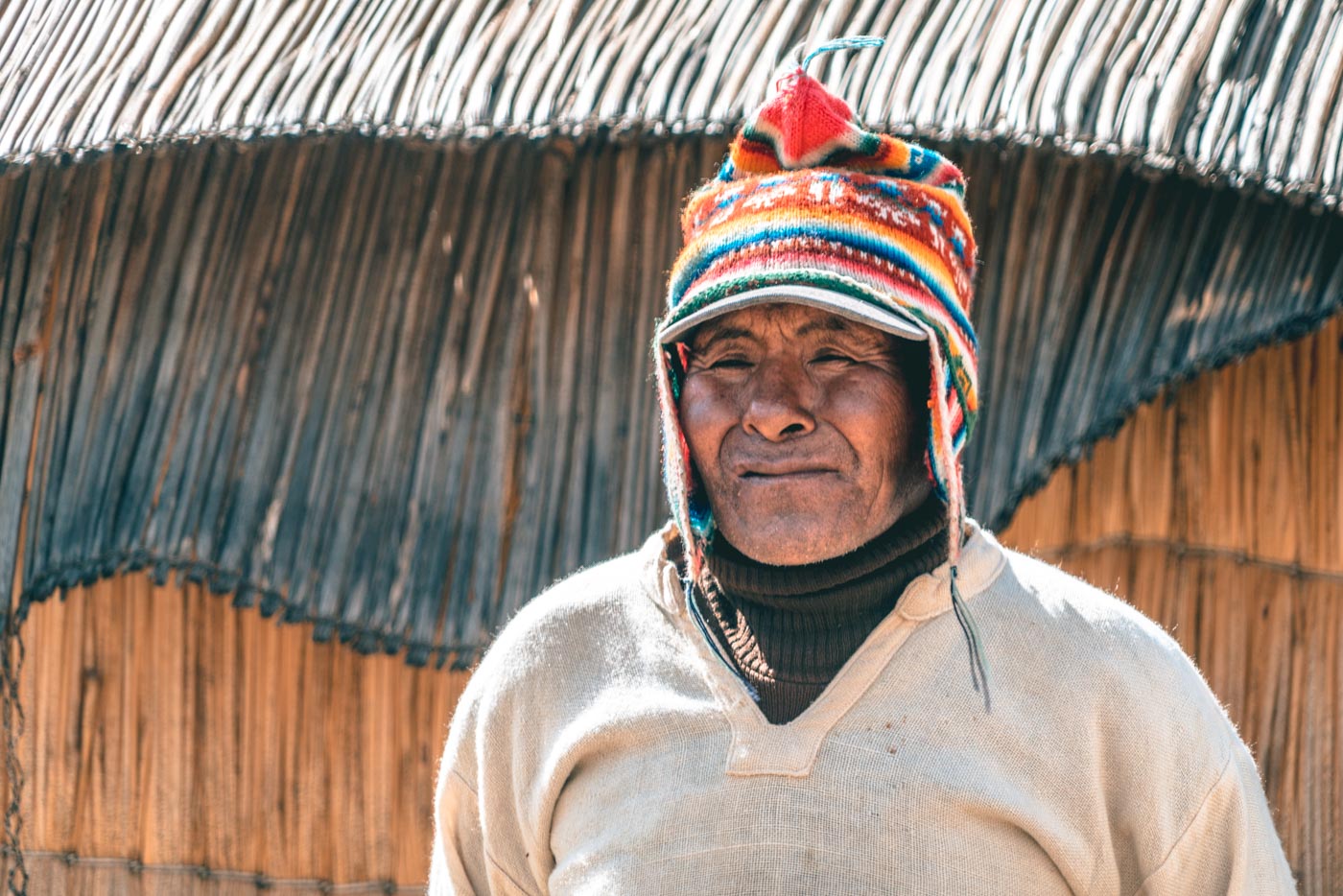
We then boarded a traditional boat for a little cramped 10 soles ride around the lake. Upon returning to the island, we were greeted by a number of souvenir stalls that were now set up by the women. We were invited to shop to support them and their families.
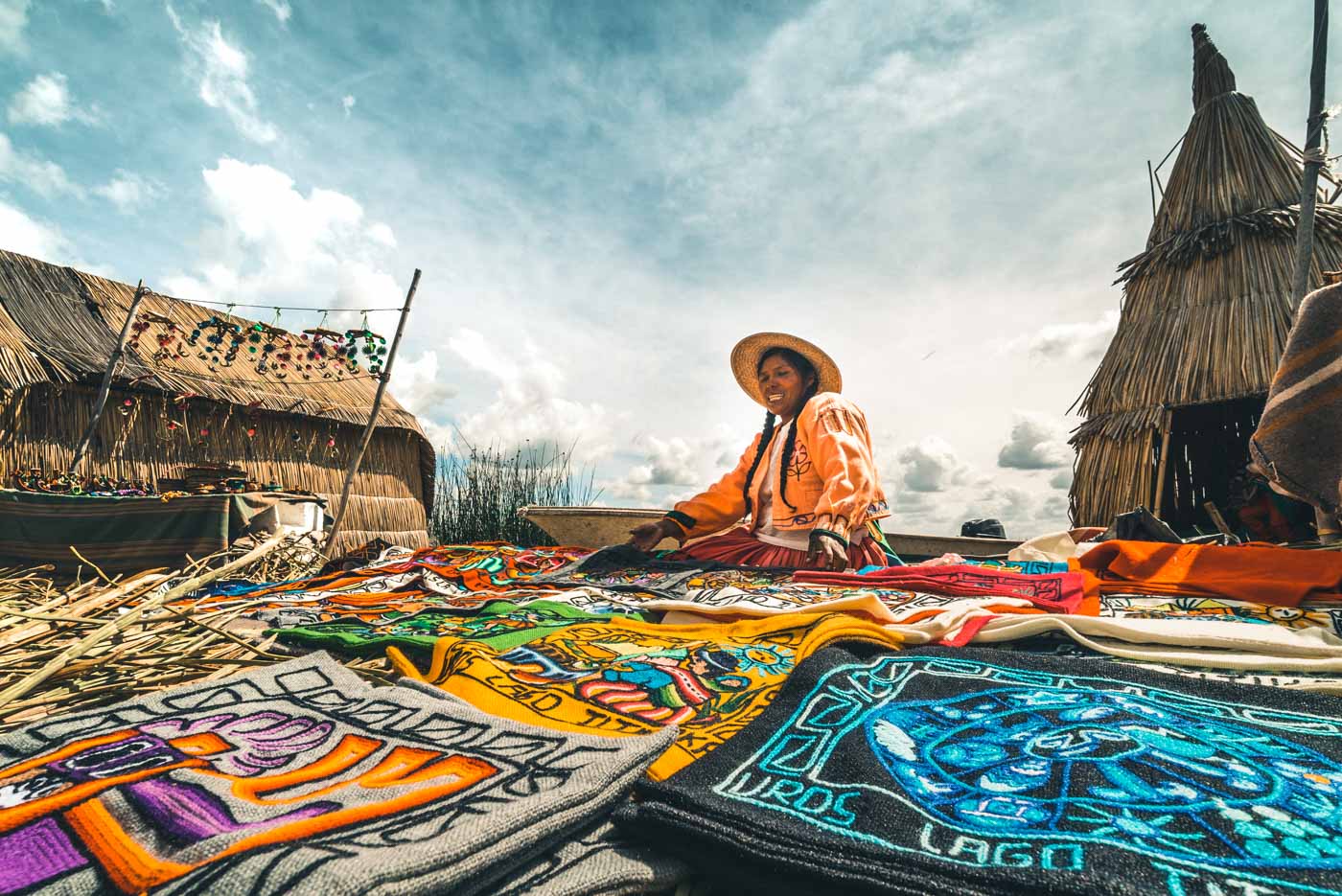
The whole visit felt very staged. From the outfits to the presentations, none of it felt like we were visiting a real island and witnessing the real lives of its residents.
“Do these families really live here?”, we asked our guide with hesitation. “If this is their real life, it must be exhausting, welcoming tourist boats like this every single day…”
He explained that tours to the islands happen on a rotation basis. There are 80 Uros Floating Islands in the area, and even though visiting the islands is becoming more and more popular with tourists, there are only about 10-20 boats visiting the islands on a daily basis.
So each island is only visited once or twice a week at most. The residents get a small cut of the profits from the reed boat ride and from the cost of the tour. The money earned is mostly used on medicine and the residents still trade fish that they catch in the lake for other produce and supplies.
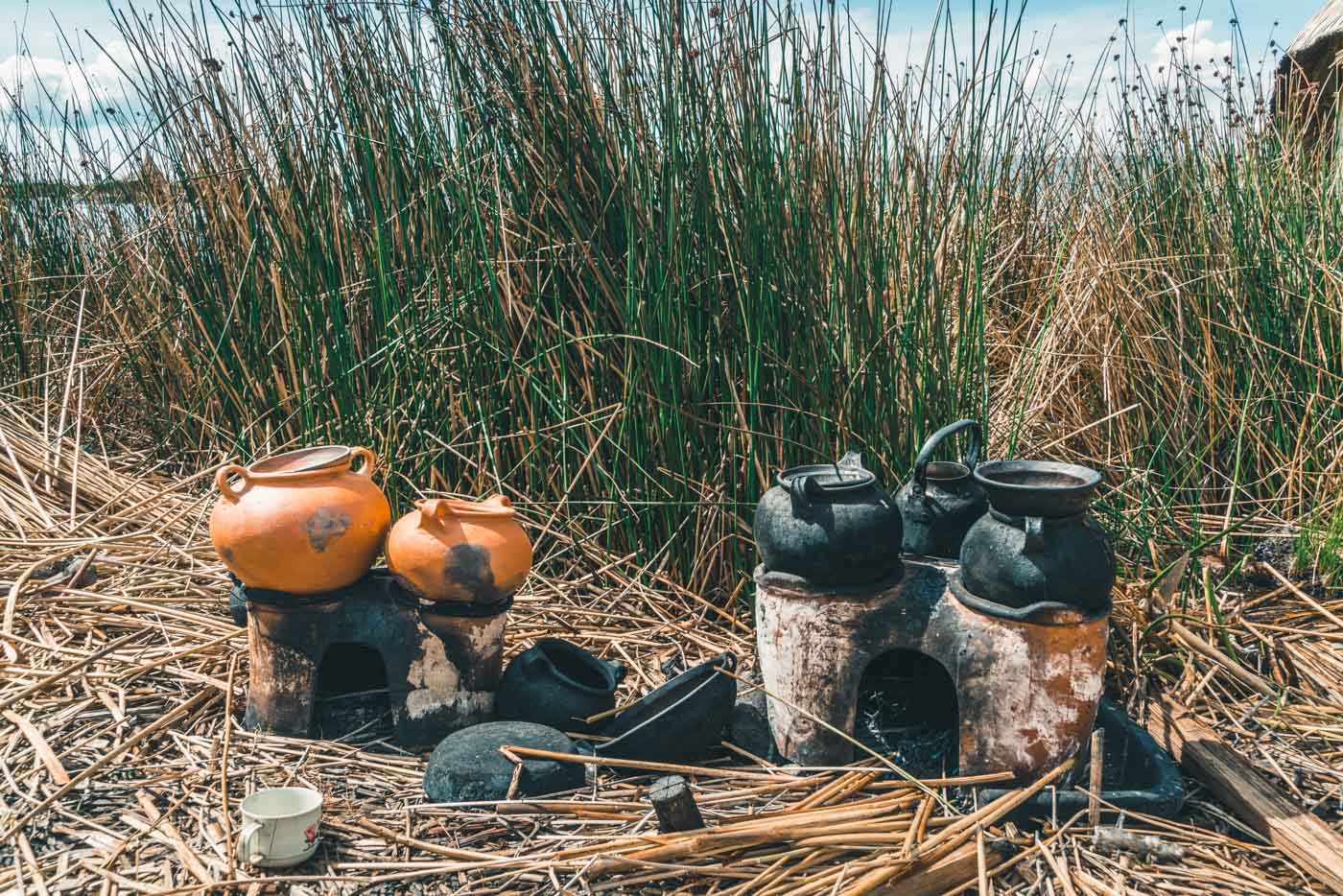
It seems like tourism is making a positive contribution in their lives, but we’ll be honest, the jury is still out on whether the lifestyle they are living is supported by tourism or forced by it.
Amantani Island, Peru
Our visit to the Lake Titicaca Floating Islands left us feeling a bit uncertain about the tour. Were we really making a positive impact on the communities by visiting their islands? We weren’t sure.
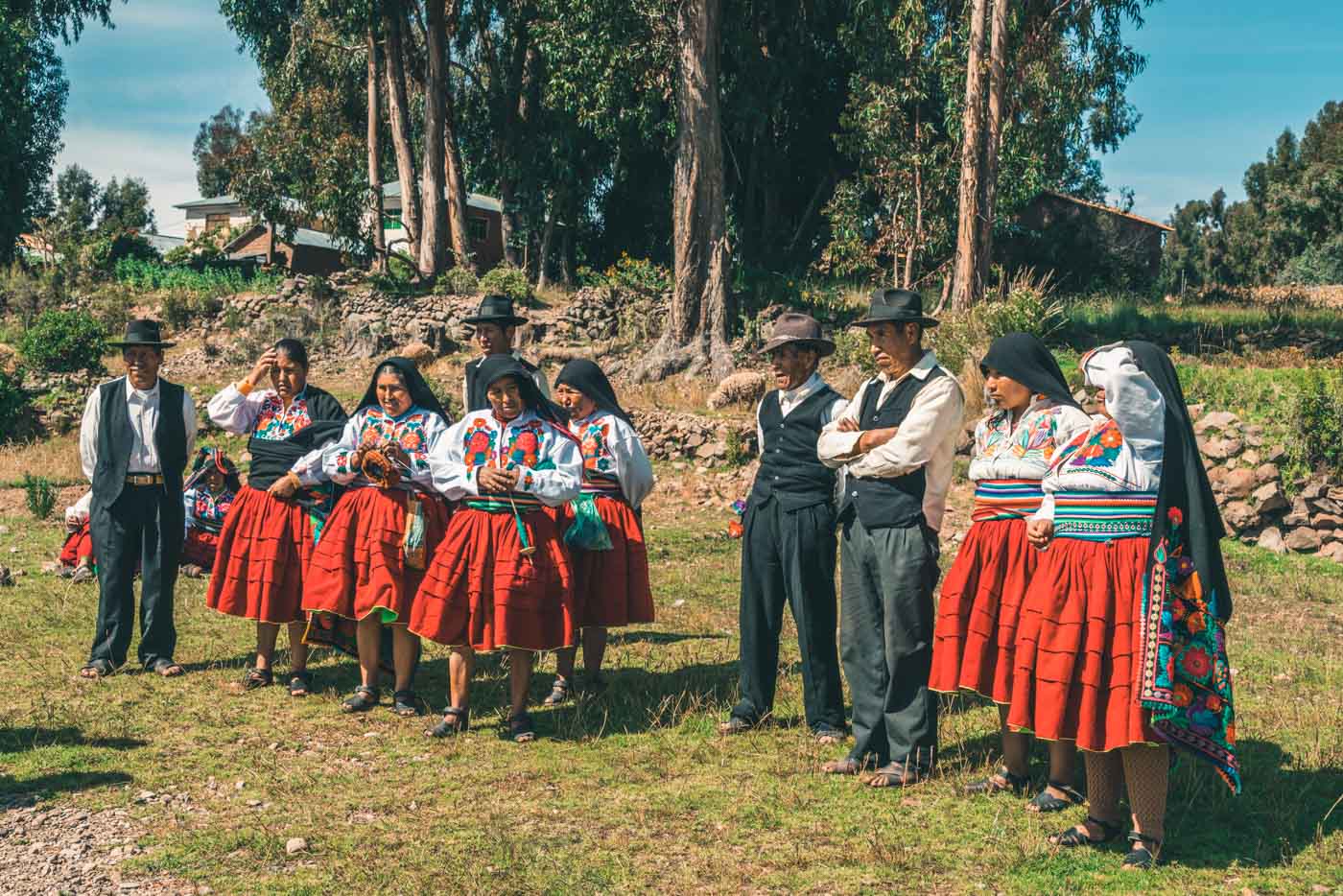
But everything changed as soon as we got to Isla Amantani, where our tour group of 30 was split up into smaller groups of 3-5 and assigned a local host family for the day and night. Our host, Damien and his wife, Aurora, were not new to the hosting program. After 4 years of receiving travelers, they still love every minute of the experience.
Their home was basic but has 2 spare private bedrooms, which makes it perfectly sufficient for hosting 2 couples. Over the course of the next 24 hours, they put a roof over our heads, fed us homemade meals, and shared fascinating insights about their family, their community, and the host family program on Amaranti Island.
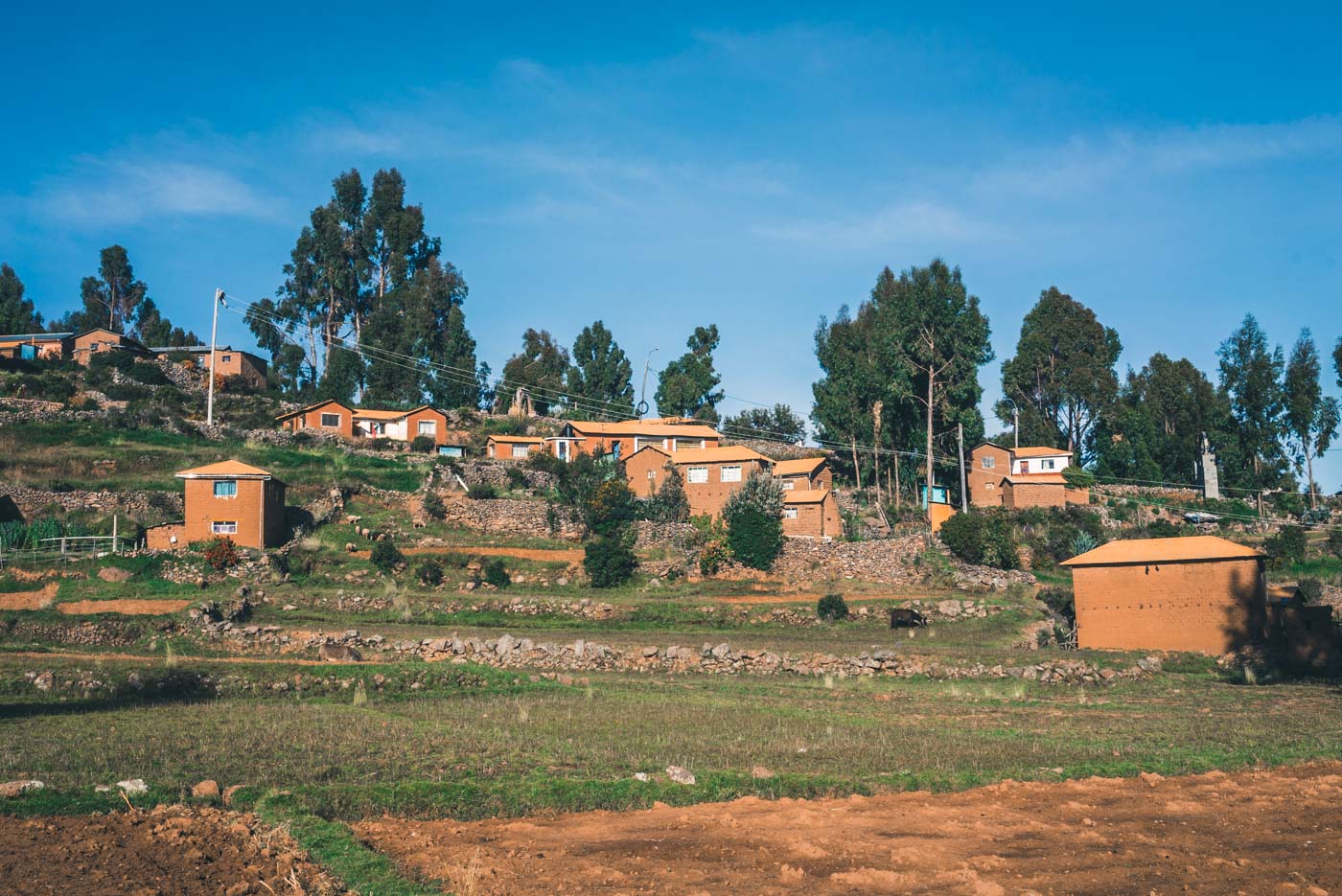
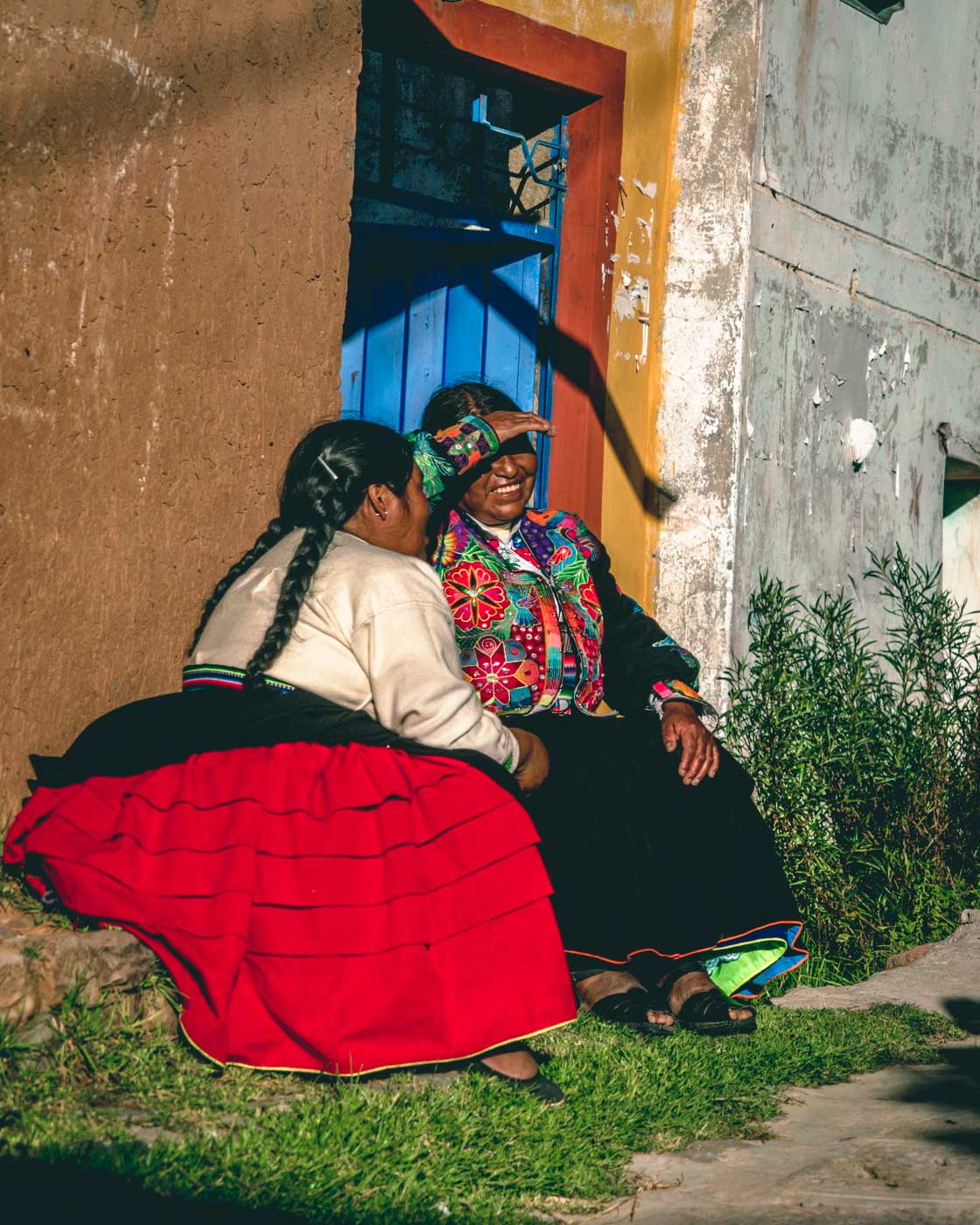
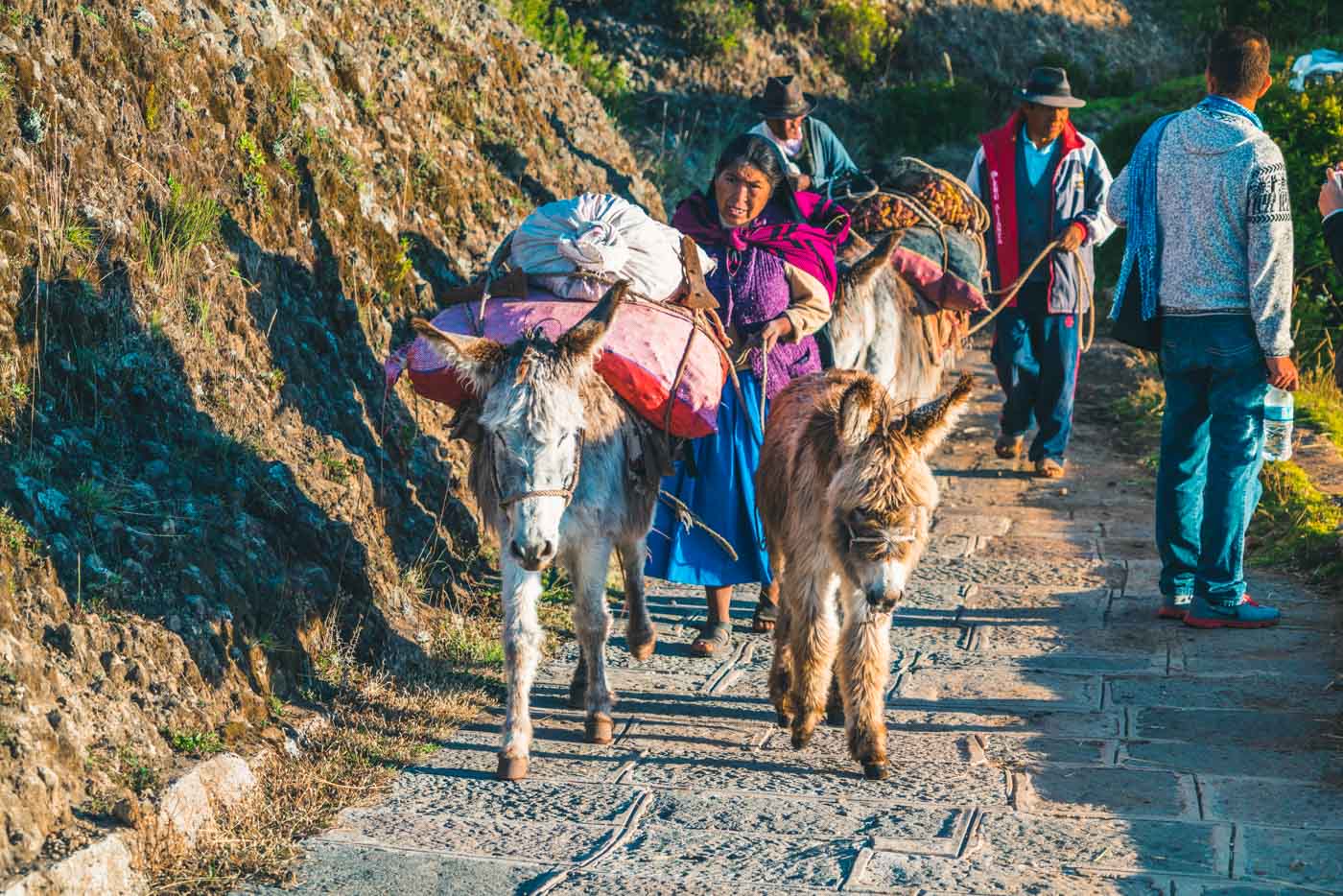
We learned that similar to Isla de Los Uros, the program on Isla Amantani happens on a rotational basis. Every week, a different community (there are 10 on the island) hosts the tourists and each household has to apply and be accepted into the program (the family’s home has to meet certain safety and privacy standard).
Once in the program, each family is able to host visitors on average once a month. The community leader does the hosting assignments so that every family can have an equal chance to participate. The family earns about $18/person every time they host, which doesn’t add up to much ($72 to host and feed a group of 4), but it works out to be one of their biggest annual income sources.
That afternoon, we reconnected with the rest of our group to explore Amantani. We climbed to the top of Pachatata for sunset and learned more about the Inca religion that’s still prevalent on the island.
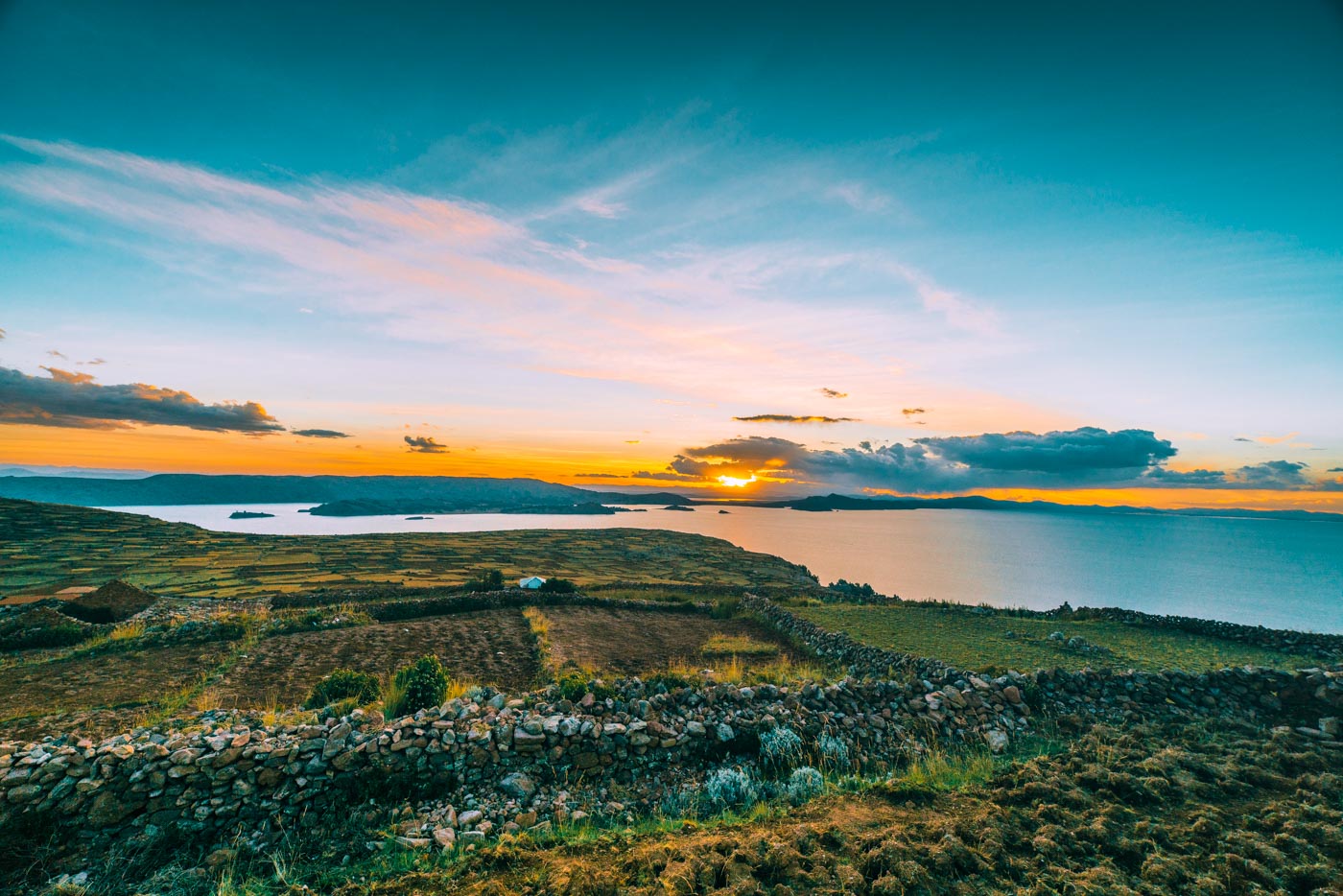
At night, despite the offer to attend a party organized specifically for the tourists, we choose to spend our evening with the family learning more about their life on this beautiful island. Aurora brought out some handmade alpaca hats and gloves, and we gladly purchased a few items to further support their family.
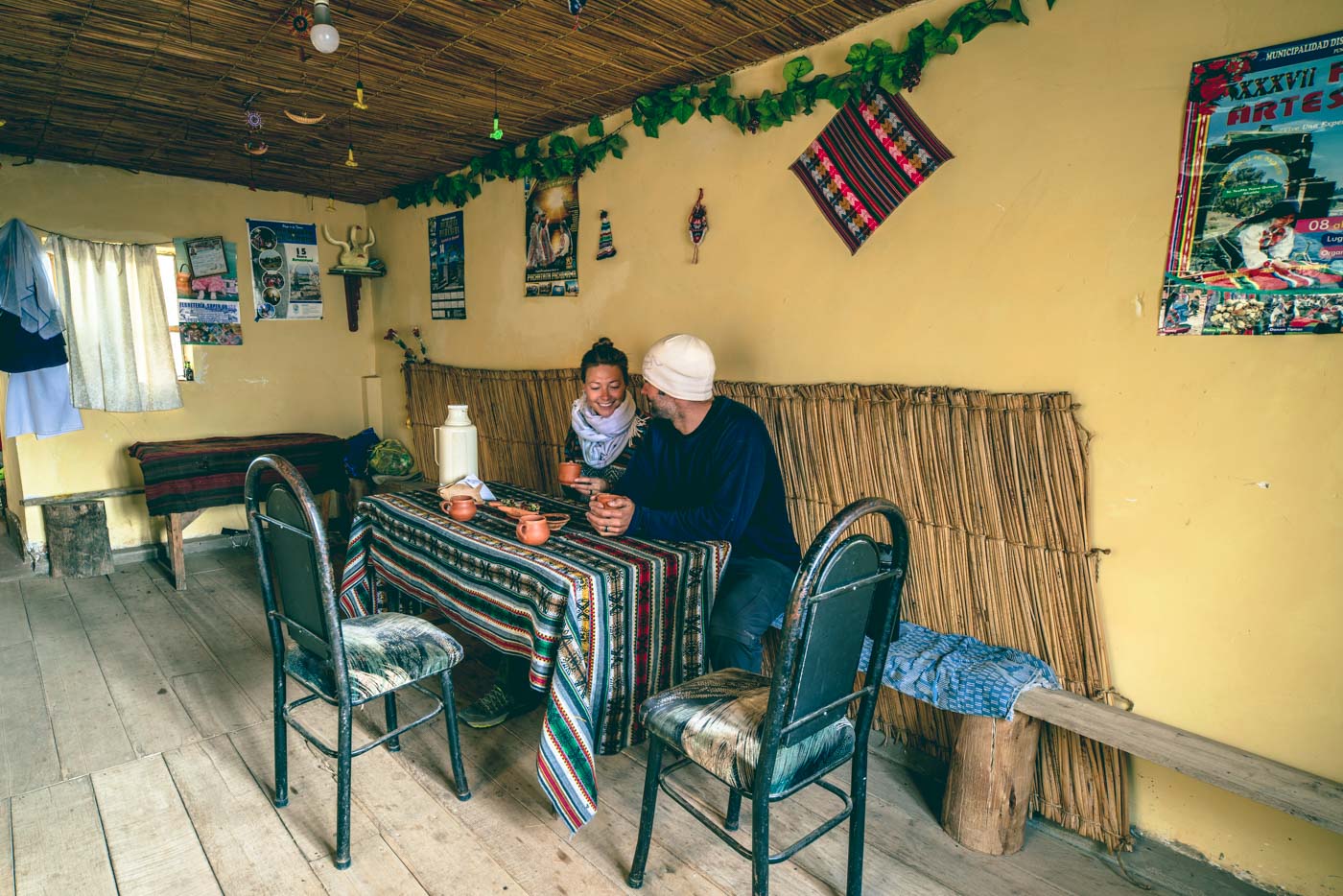
Our time with Aurora and Damien came to an end the following morning and after a few photos together we said our goodbyes and set off for Taquile Island. It was a short but insightful visit that made us grateful for embarking on a trip to this remote Amantani Island.
There was no doubt in our minds about the authenticity of our experience on Isla Amantani. It was as genuine as it can be and our host family could not have been more grateful for our visit.
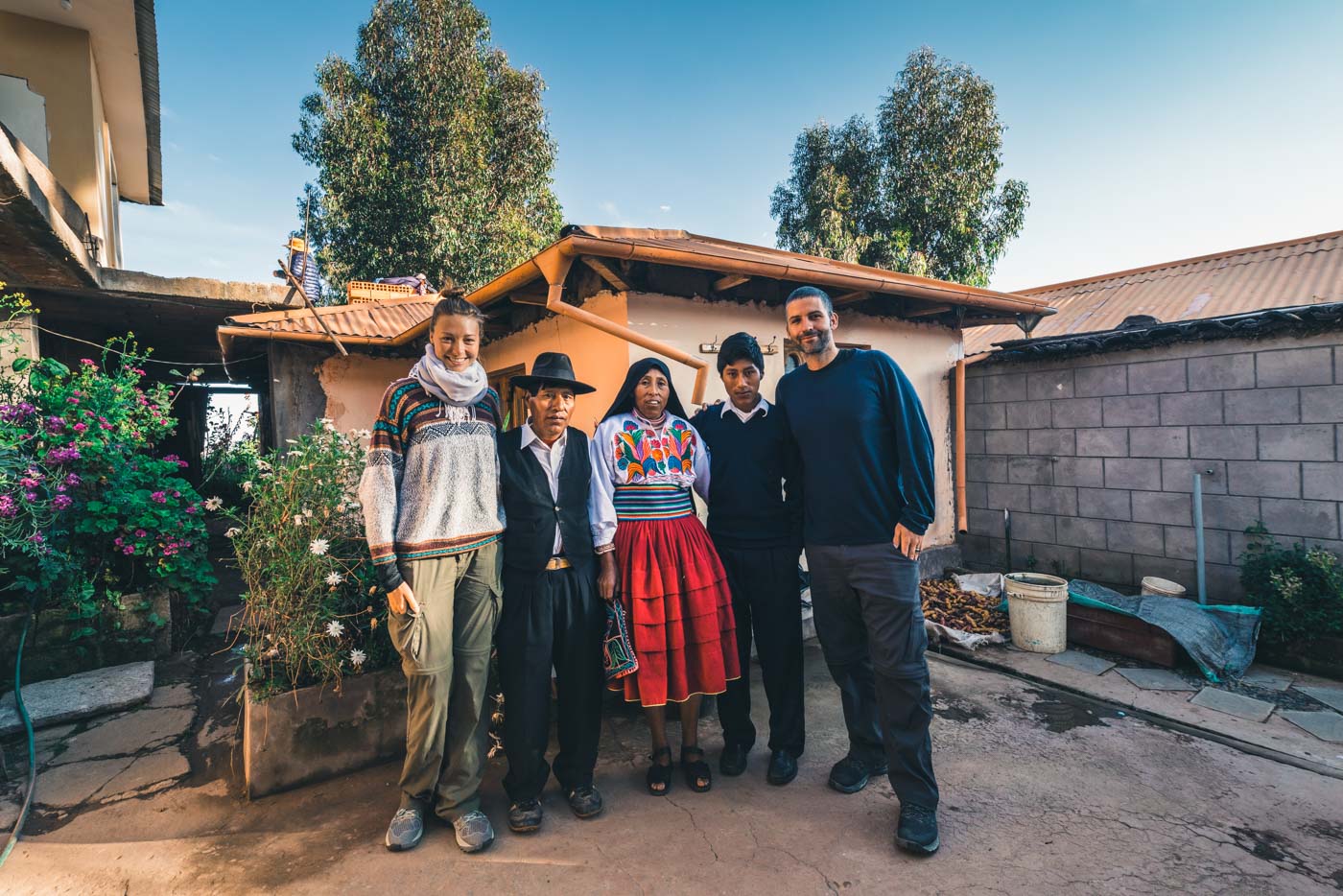
Taquile Island, Lake Titicaca, Peru
We arrived on Taquile Island shortly after departing from Isla Amantani and after a bit of exploring in the main plaza we embarked on a nature walk to the Northern side of the island.
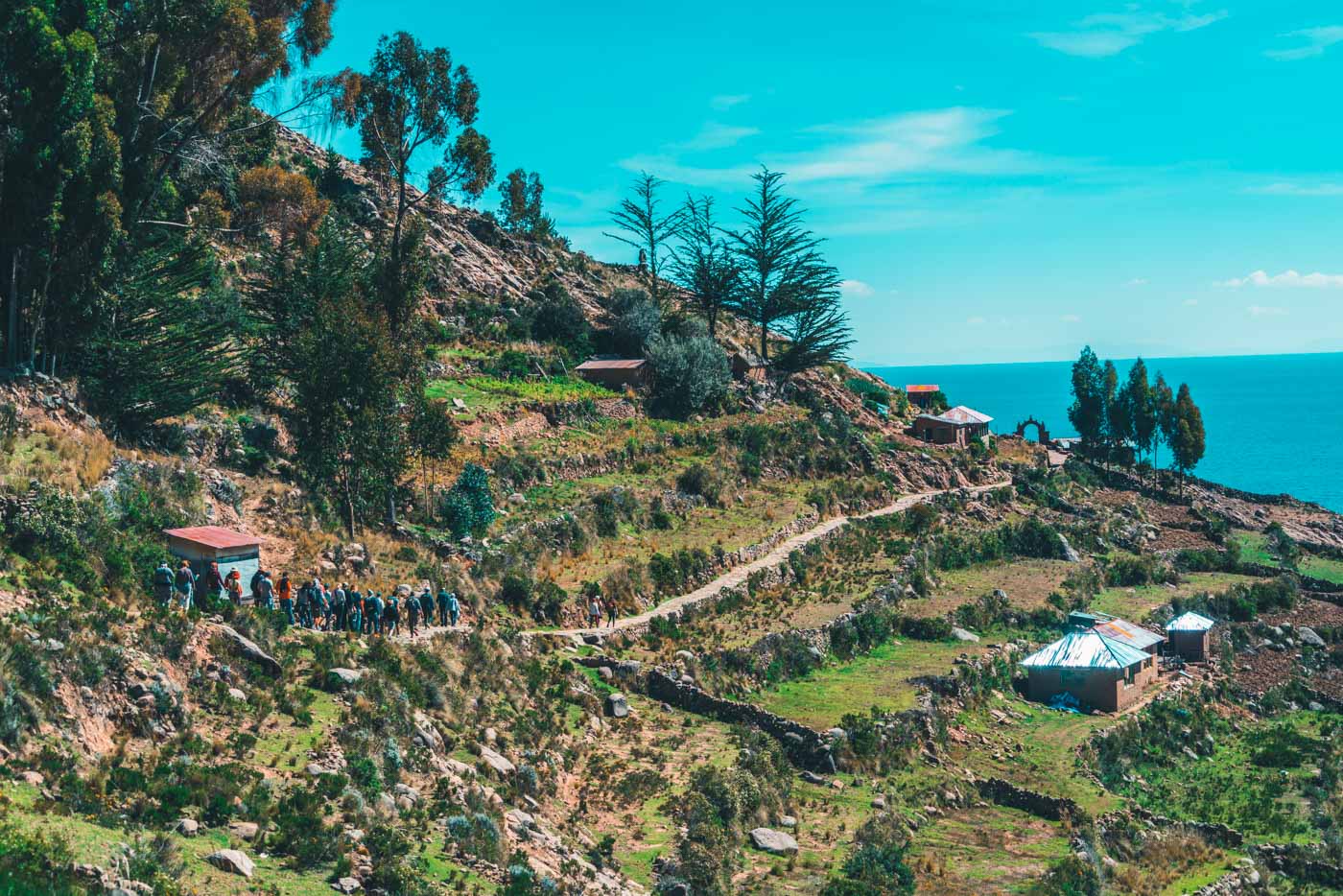
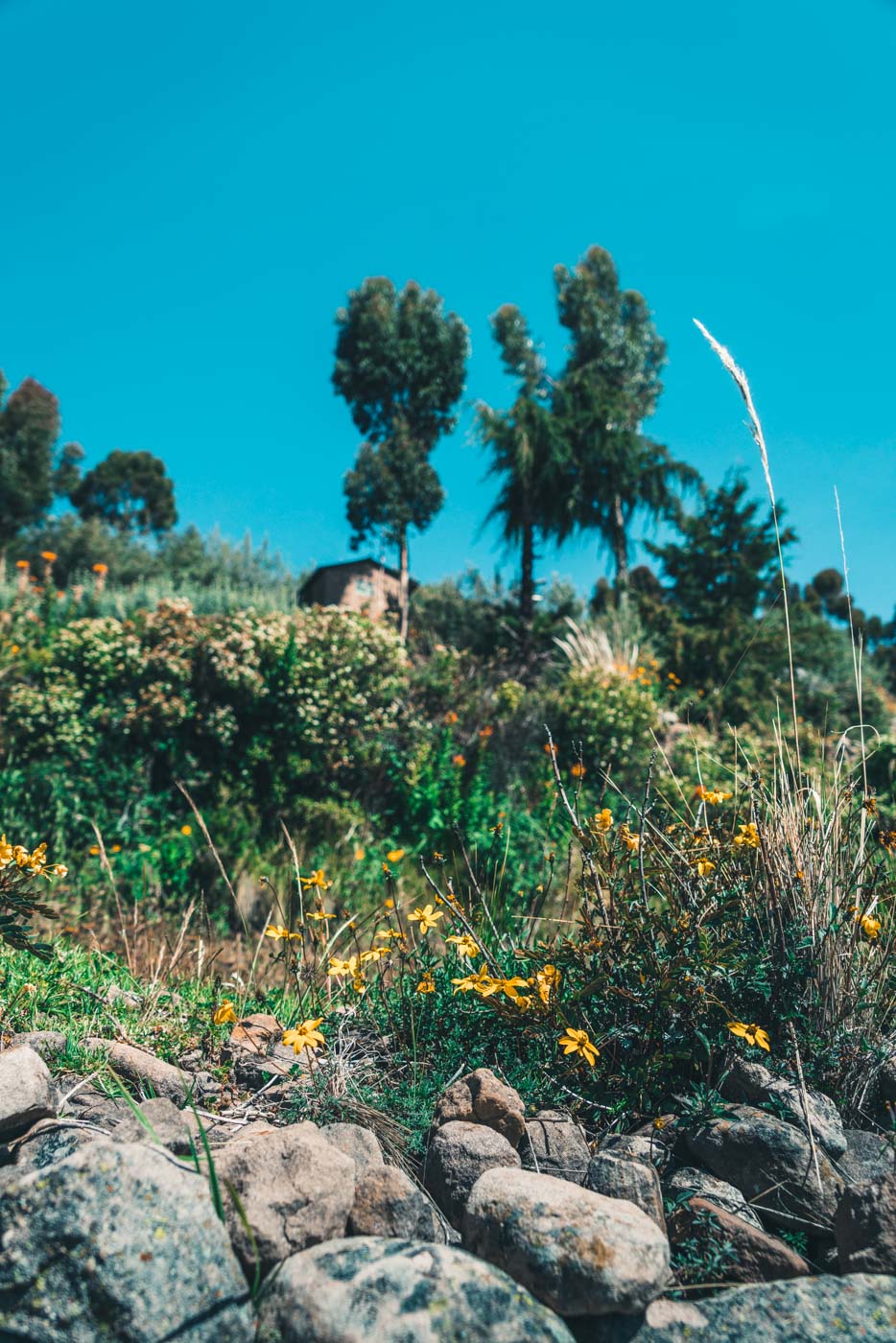
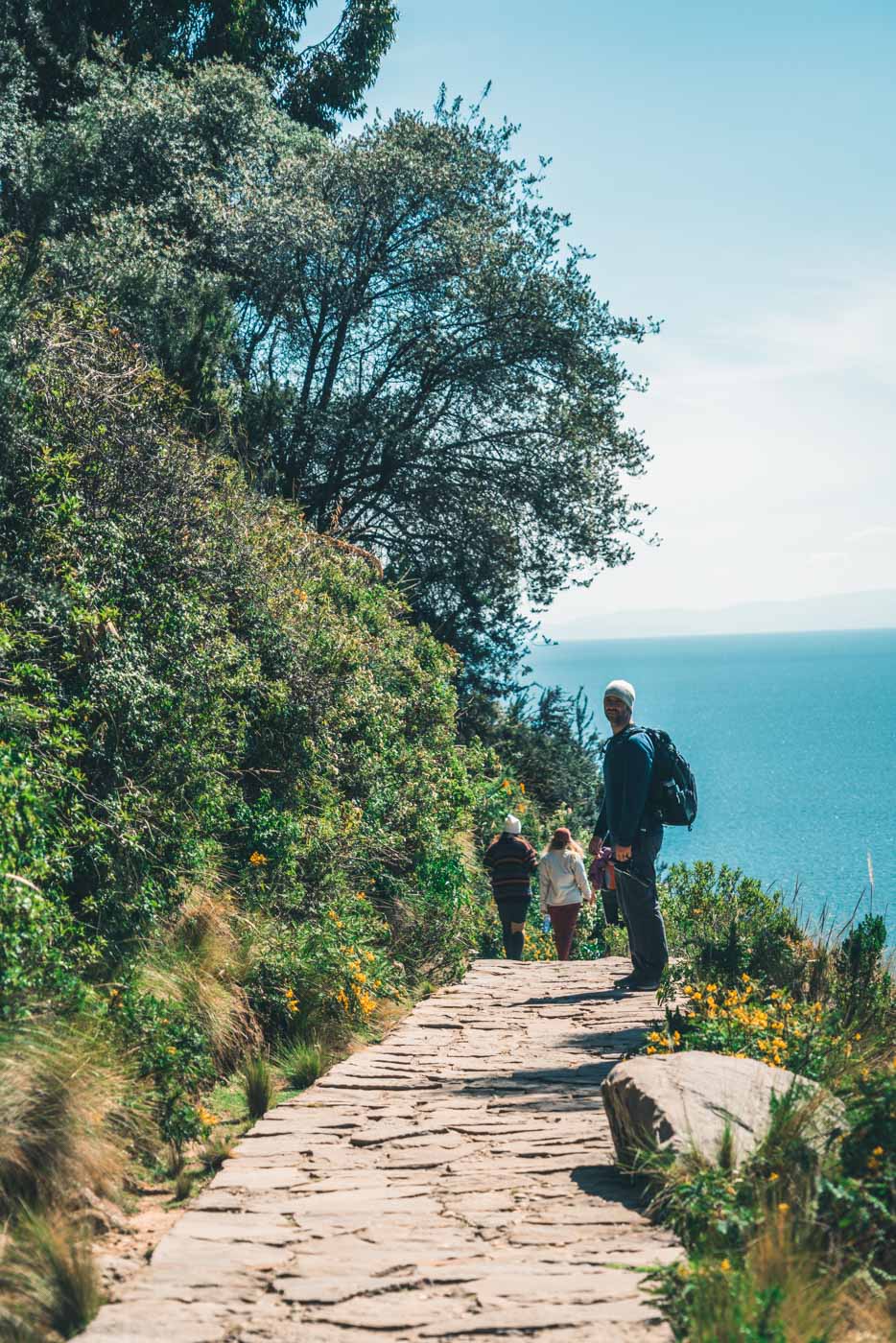
Lunch awaited us at Restaurant Taquile (one of the few restaurants on Taquile island) along with a fascinating presentation about the island’s customs and traditions. Our guide demonstrated how the locals use natural herbs and plants for cooking, cleaning, and for medicinal properties and taught us all about Taquile island’s unique attire.
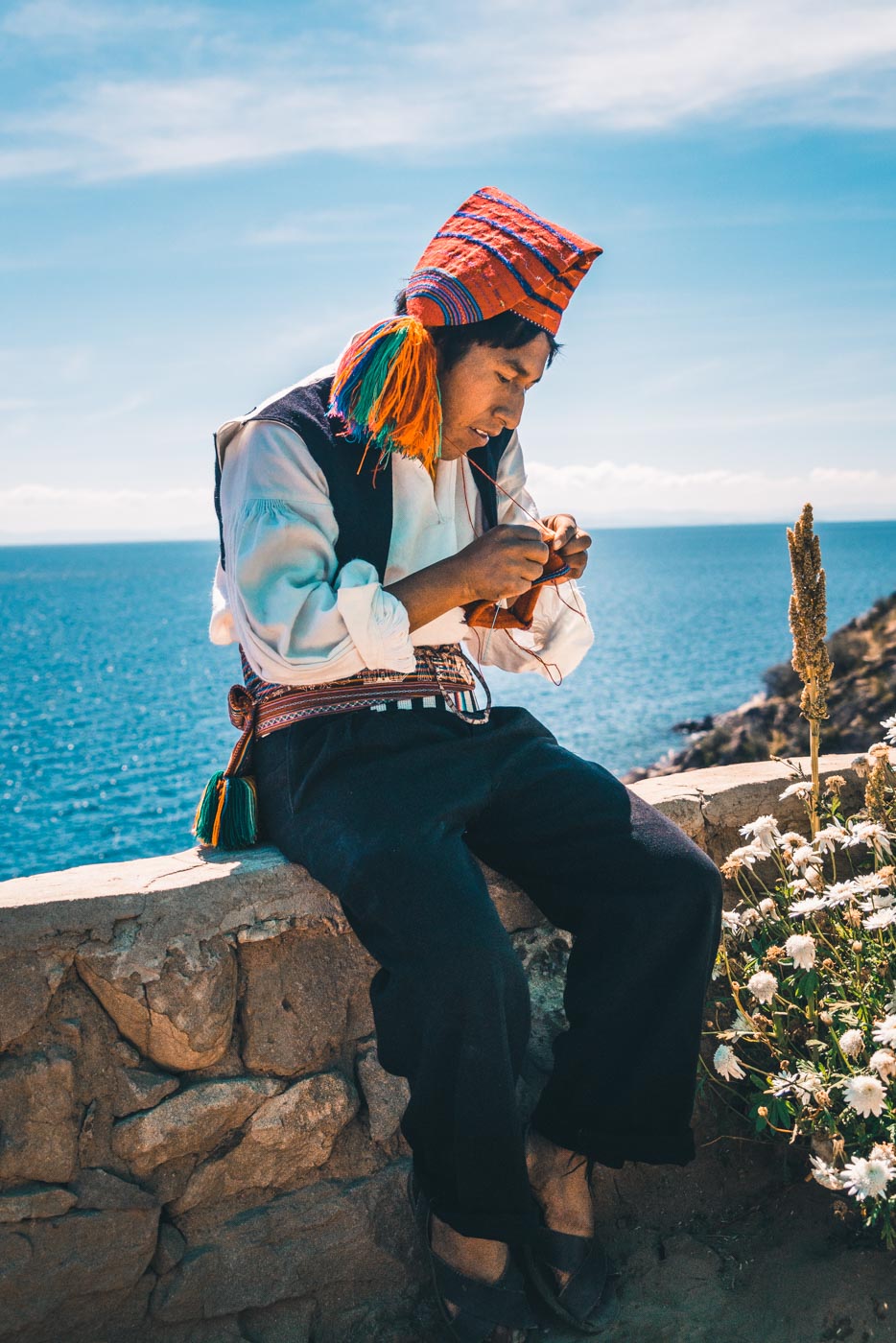
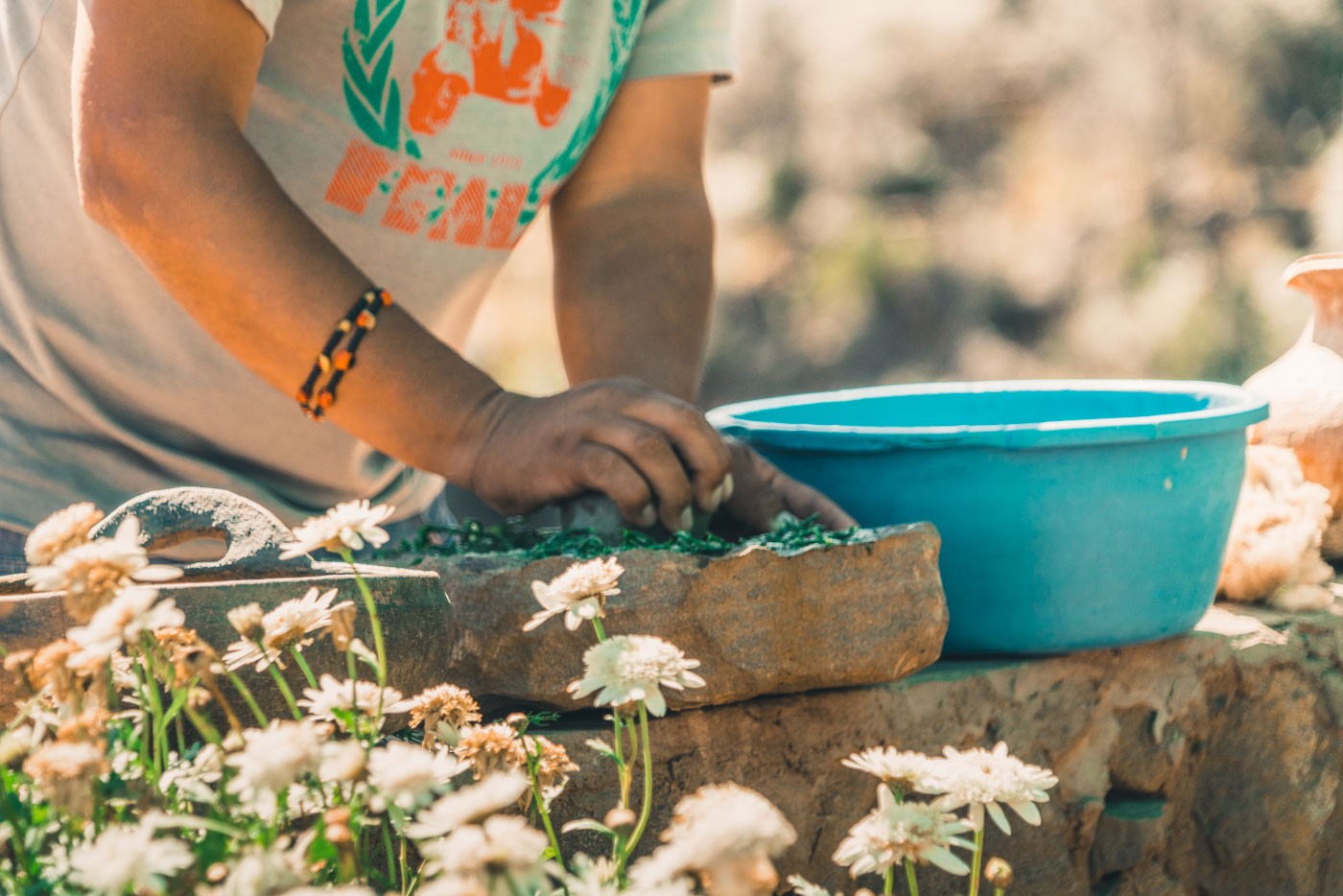
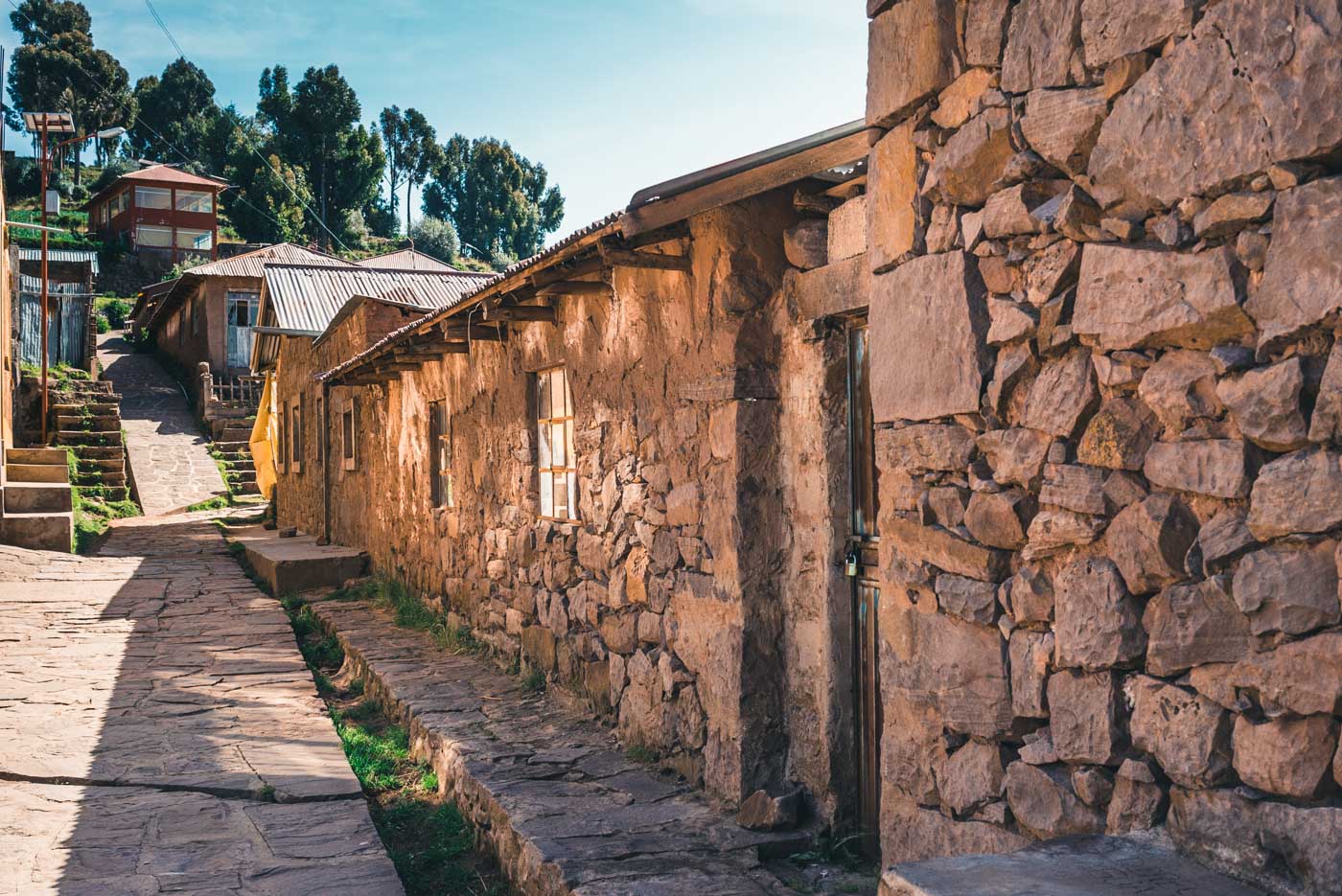
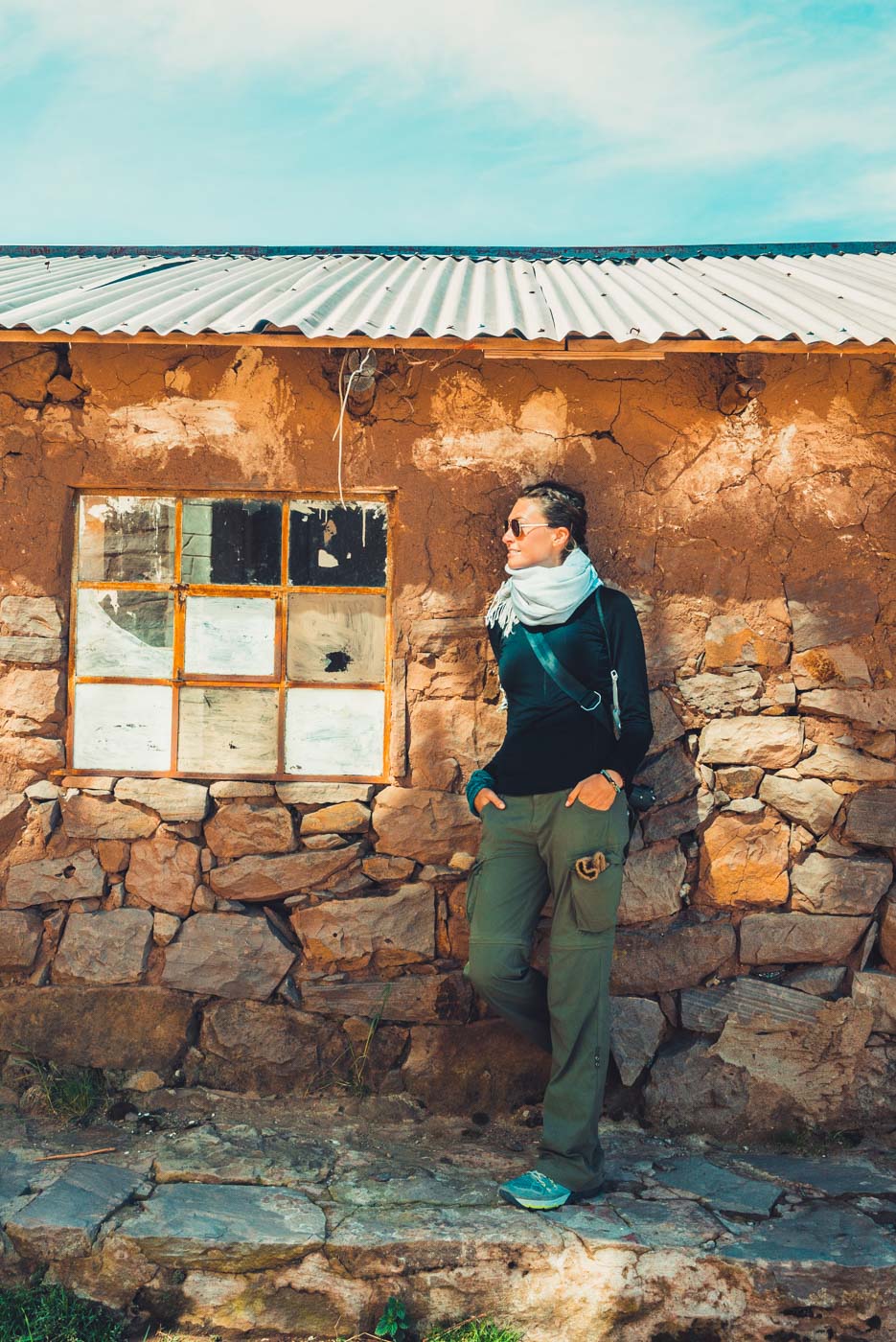
It wasn’t long after the delicious lunch that we had to say goodbye to Taquile Island and head back to Puno, Lake Titicaca.
Final Thoughts on Lake Titicaca Tours
Despite the initial hesitations about our visit to the Peruvian islands on Lake Titicaca, we really did enjoy our stay on the islands.
Traveling in a large group wasn’t our favourite, but it seemed to be the only way to visit the islands. We heard reports that independent travelers can visit all 3 islands on their own if you have a decent Lake Titicaca map, but Isla Amantani and Taquile’s distance from Puno make them difficult to reach without a bigger boat.
If you have the time, the islands are definitely worth a visit! Come with an open mind and a sense of curiosity and you’ll be rewarded with a new perspective on simple living, Inca religion, customs, and traditions.
Be extra vigilant in your choice of tour operators when it comes to selecting Lake Titicaca tours. Choose local providers that treat the homestay families with respect and pay a fair price for their participation in the homestay program.
Disclaimer: We traveled to Uros, Amantani and Taquile islands as a part of a 2D/1N homestay tour arranged by Find Local Trips and run by a local provider, Kollasuyo Travel, however all opinions expressed in this article are our own.

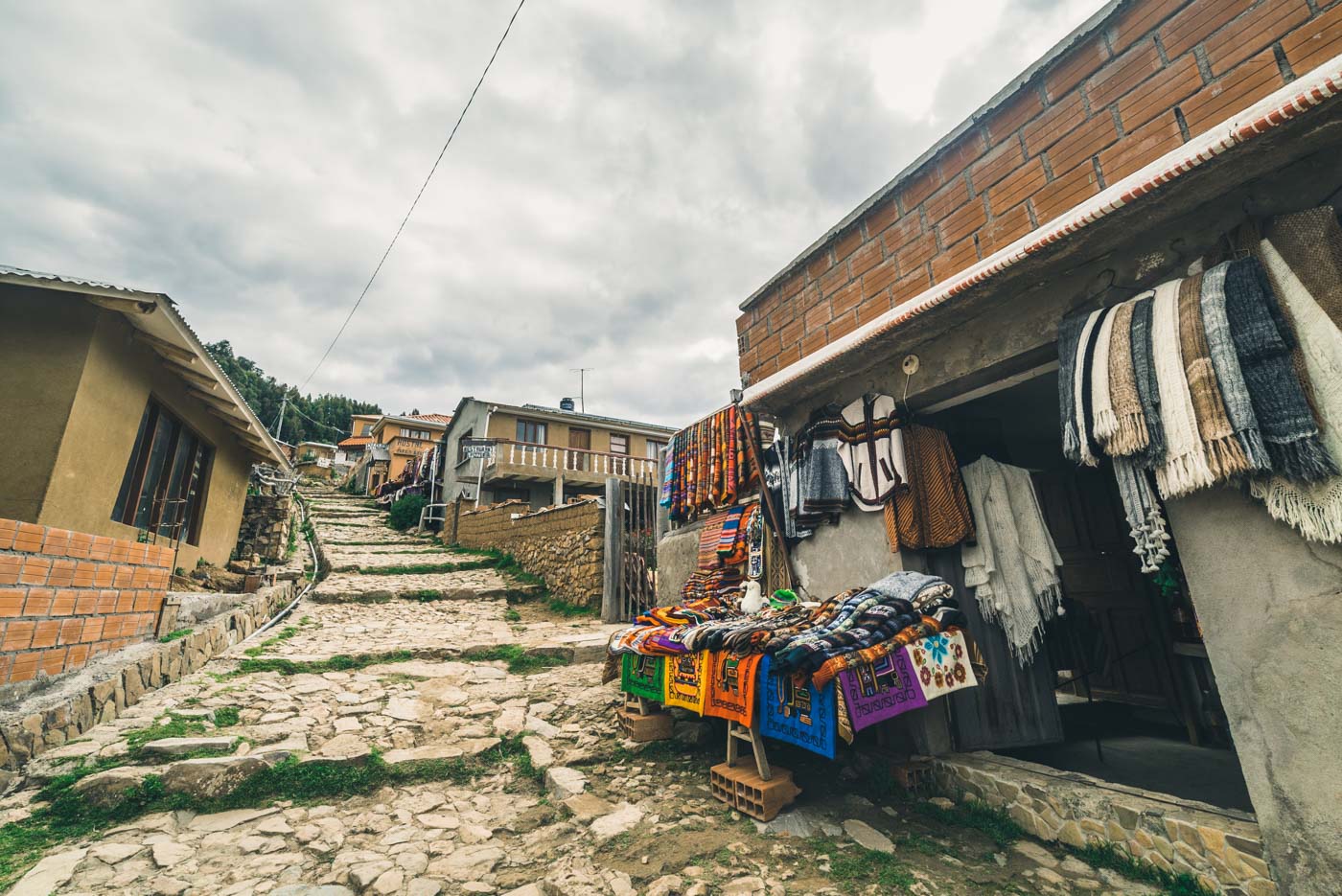
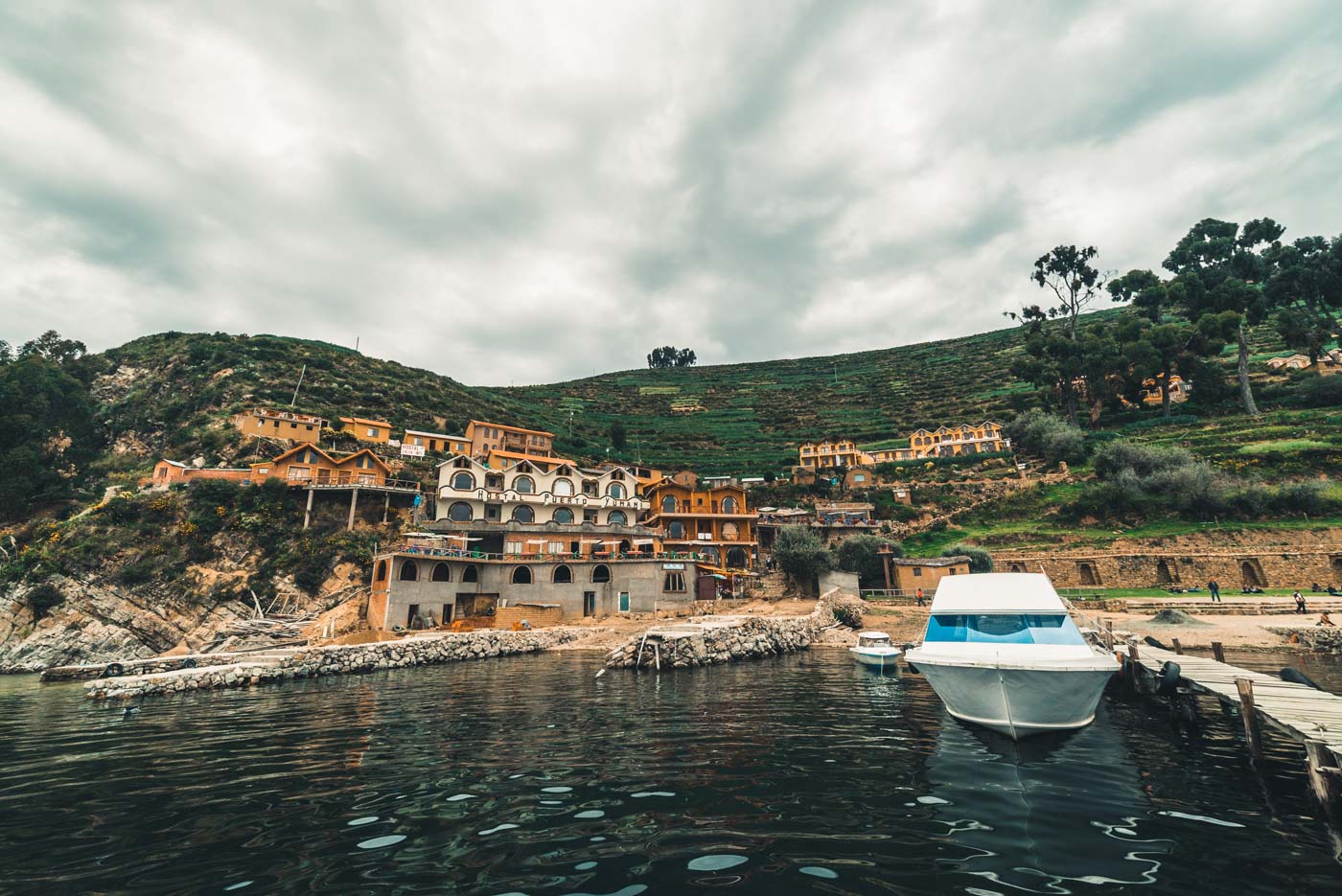
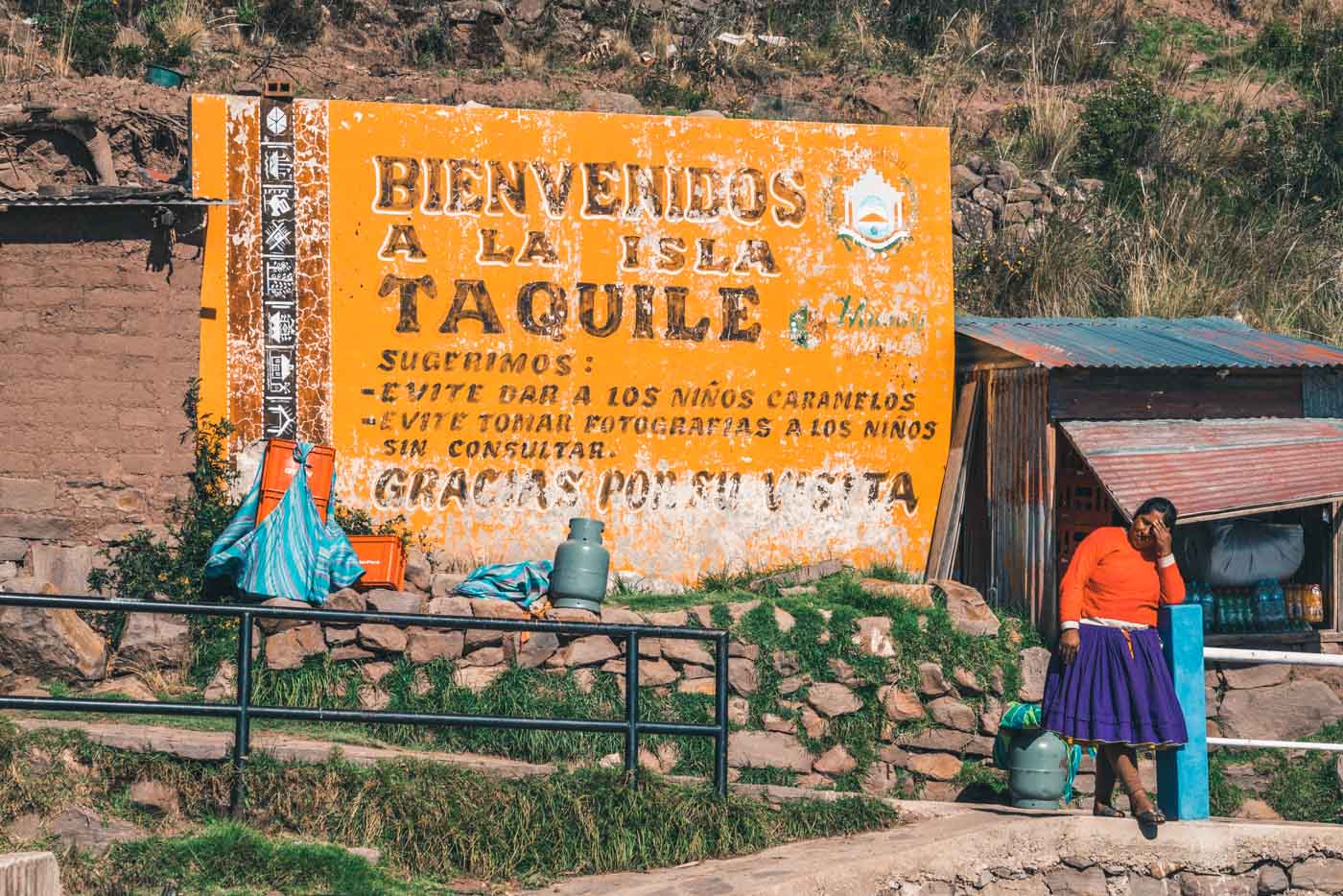
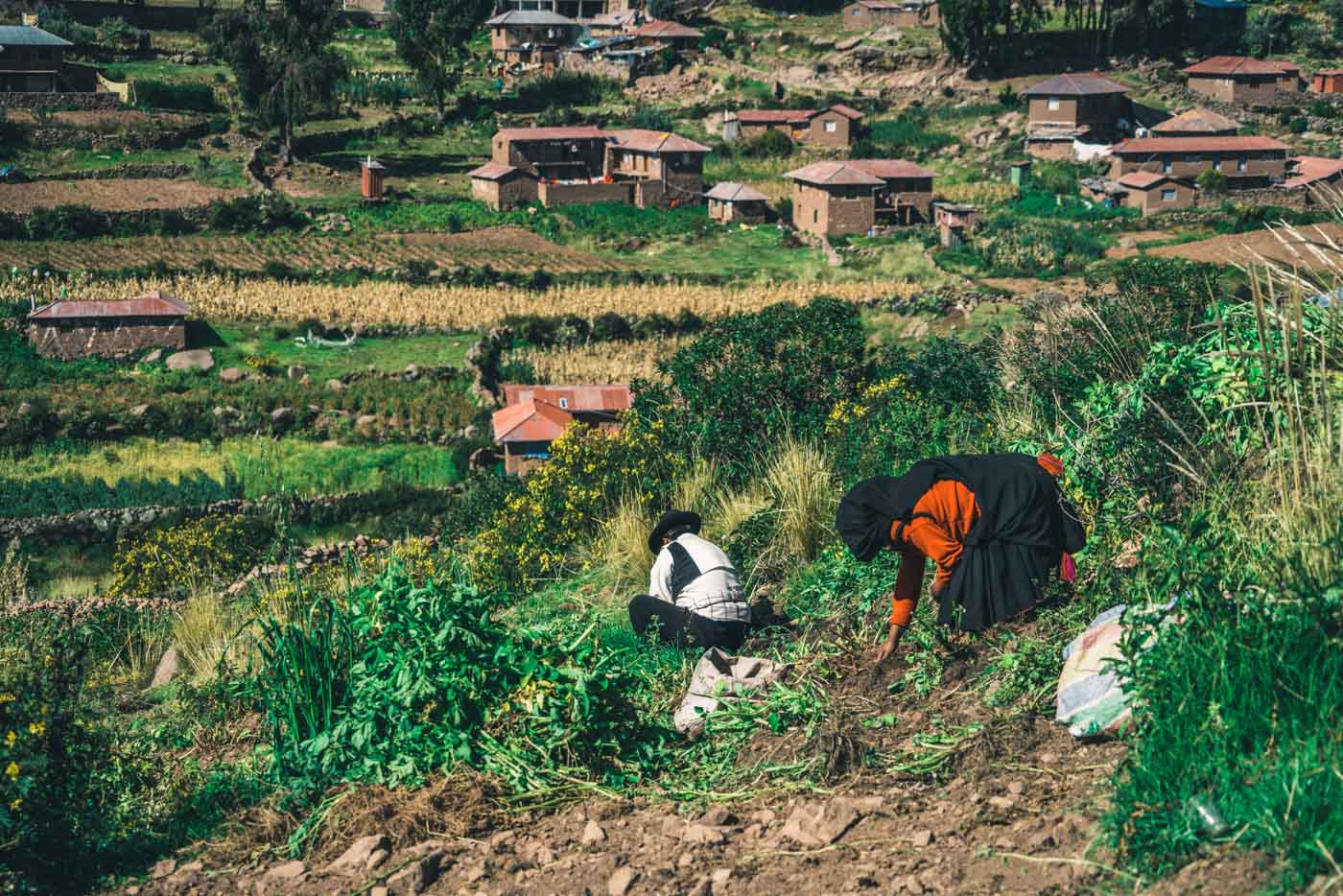

Max & Oksana, I really admire the positive purposes that you guys set out for all your travels. Your stay in Peru seem exotic yet meaningful. Great to see that people like you guys do travel for a purpose, not just solely for fun!
Love your blog – keep up the good work!
Thanks, Ivy. We are so happy to hear that you enjoy our work and hope that our travels in Peru have inspired you to add it to your bucket list (if you haven’t been yet!).
Thank you for your post! It was very interesting and informative and has helped me plan our trip in the Lake Titicaca region. All the best and happy travels.